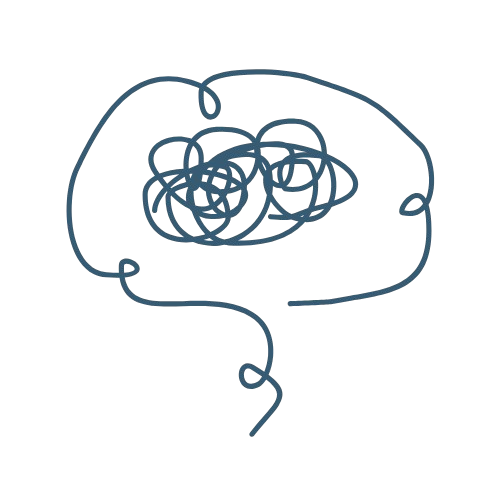Social anxiety has been an issue amongst teenagers for years. In fact, 1 of 3 adolescents have experienced symptoms of Social Anxiety Disorder (SAD). The discomfort of maturing coupled with complex social relationships makes the teenage years particularly stressful socially.
You might be on the fence about your own experience with social anxiety. Maybe you only feel socially anxious in certain situations, or it varies so highly that it’s hard to tell if you have an actual problem. Figuring out the different sides of social anxiety can help you recognize it and learn ways to manage it. Let’s dive into the types and signs!
What is Social Anxiety?
The first step to identifying this disorder is in understanding what it is. Social Anxiety Disorder (SAD) is an anxiety disorder that creates severe distress in the individual when confronted with social situations. It often prevents individuals from potential opportunities due to the consuming fear of social interaction. This fear stems from fear of judgment and humiliation. For this reason, social anxiety is not considered a “phobia” of social interaction, rather a perpetual fear of how others will perceive you.
You may see signs similar to anxiety in general, like racing heartbeat, ragged breathing, and sweaty palms. Constant avoidance of conversation with strangers, meeting with friends, and going to parties is often seen in those with SAD, but can also be general shyness. So, what are types of social anxiety, and what signs should you look out for?
Types of Social Anxiety
You may not know it, but there are various types of social anxiety. Someone who seems to be socially active may actually have SAD, just in different situations. So, here are the types, rather levels, of SAD.
Mild
Someone with mild social anxiety would experience symptoms of SAD but would engage social situations nevertheless. They do not experience symptoms very severely, and may only experience them in certain social situations. This level may not require serious psychological treatment, but simple therapy would be beneficial
Moderate
Someone with moderate social anxiety will experience symptoms of SAD but will endure social situations. However, they may avoid certain social situations, unlike those with mild social anxiety. Again, serious treatment may not be necessary but therapy would be helpful in reducing symptoms.
Severe
Someone with severe social anxiety will experience symptoms of SAD very intensely. This can also come in the form of a panic attack. They will experience social anxiety in nearly all social situations and actively avoid them at all costs. Serious psychological treatment would be best for those with SAD to this severity.
Signs of Social Anxiety
It is hard to differentiate SAD from simple shyness, and understandably so, as there isn’t enough conversation around this disorder. So, if you are wondering whether you are just a bit asocial or might have an actual disorder, here are a few things to look out for.
#1 : Fear of Humiliation
One of the trademarks of SAD is the constant fear of humiliation or embarrassment. While those with SAD may just not like talking to others, it is the fear of judgment that can drive and initial shyness into social anxiety disorder.
If you find that you don’t like talking to others because you don’t enjoy engaging in conversation, you most probably do not have mental health disorders. It is normal for certain people to simply dislike social interaction, and may not engage in social events due to lack of interest.
However, if your mind immediately goes to what people will think of you when a social event is brought up, you might want to look into SAD. A severe fear of judgment that inhibits your social interactions is most definitely not normal, and it is best to consult a psychiatric professional.
#2 : Avoiding Attention
Teenagers with social anxiety hate being the center of attention. It is one of their worst nightmares to be what everyone is looking at, and potentially judging. Just the thought of anyone noticing you would make you want to curl up in a ball and sob.
It is, of course, uncomfortable to have all the attention drawn towards you at inappropriate times. However, for those with SAD, the idea of being the center of attention is a fear they have for every social event, and that attention is often imagined to be from embarrassing actions.
#3 : Hyper Self-Consciousness
Teenagers with social anxiety are notorious for worrying about who they appear to others. It is not about keeping a pristine image for good first impressions, rather to prevent that weighing fear of humiliation. They are desperate to fit in the crowd so they can stay unnoticed, and they often worry if their self-image may be too different. The lack of noticing equals the lack of judgment, and they often do their best to change their image to prevent judgment and attention.
If you find yourself constantly worrying about what you are wearing, what you look like, and how you are talking during any social event, you might be depicting symptoms of social anxiety. While it is normal to be concerned about how others perceive you in order to give the right impression, it is not normal for it to be in the forefront of your mind. If anytime outside of your own home calls for loud and perpetual thoughts of self-consciousness, it might be time to think about contacting a psychologist or therapist who can help you.
If any of these symptoms do apply to you, it is possible that you have social anxiety. However, it is important to note that you should never self-diagnose, even if the information you are viewing is researched and medically correct. The more responsible way to console your concerns regarding potential disorders is to contact a psychiatric professional who can properly diagnose you.


